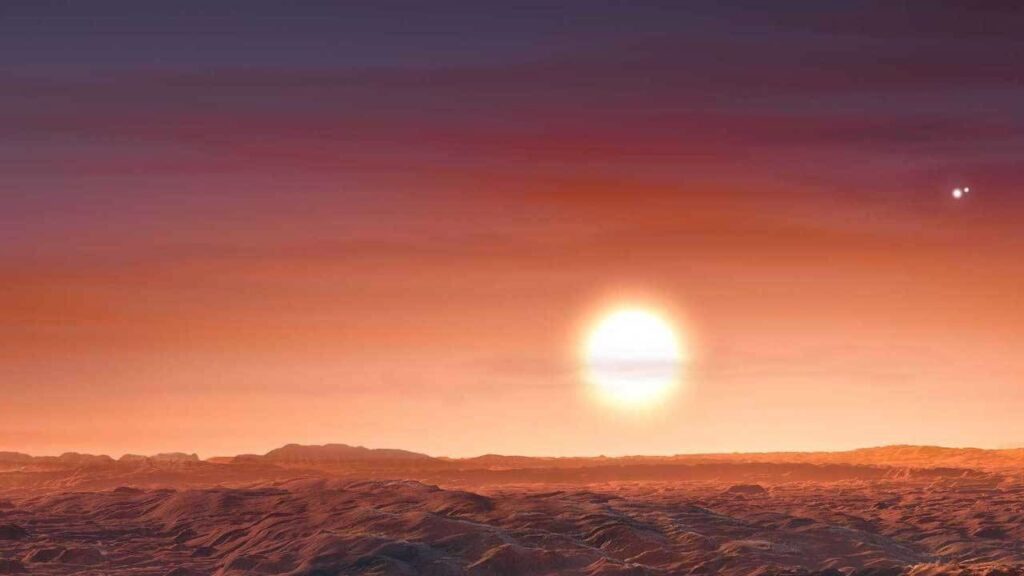What if somewhere in the universe, there’s a world that reflects light – and possibly even physics – in a way we’ve never seen before?

That’s what scientists recently stumbled upon when observing an exoplanet called LTT 1445 b, located about 22 light-years away from earth. Using data from NASA’s TESS (Transiting Exoplanet Survey Satellite), astronomers noticed that this planet behaves strangely – almost like a mirror.
What Makes This Planet So Mysterious?
Unlike most planets we study, LTT 1445 b doesn’t reflect or absorb light in the usual way. Its albedo (reflectiveness) suggests it might have a surface or atmosphere that bounces light differently, making it appear darker or almost mirrored when viewed from certain angles.
Even more fascinating – it orbits a trio of stars, not just one. The light coming from these may be affecting how the planet looks or behaves.
Some researchers have begun to call it a “mirror world candidate“, not because it shows actual mirror images, but because of how bizarrely it interacts with its environment. The physics is not reversed, but the optical behavior is like nothing we’ve seen before.
Could Mirror Worlds Actually Exists?
While this planet isn’t literally a parallel Earth, the idea of “mirror worlds” has been part of speculative physics for years. Some scientists believe there could be entire universes or particles that are symmetrical to our own – like cosmic reflections.
Planets like LTT 1445 b don’t prove that theory, they open doors to asking big questions:
- Could physics behave differently in distant systems?
- What would it mean if light acts oddly on other planets?
- Are we just scratching the surface of understanding reality?
Final Thought
Every new discovery remind us that universe is far stranger than we imagine. whether or not this planet is truly a “mirror world”, it reflects something powerful – our desire to explore the unknown.
Sources:
- NASA Exoplanet Archive
- NASA TESS Mission
- Nature Astronomy (April 2025 observations)